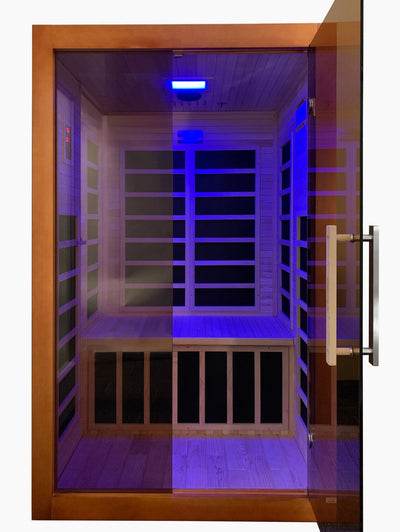Easy Ways To Improve Air Quality (and Your Health)
When we refer to an essential source of income, we refer to it as “our bread and butter.” This makes sense, given how necessary food is for life. But there is something still more vital to our survival than food: the air we breathe. Yet, we’re often lackadaisical about the quality of the air we breathe day in and day out and the impact it can have on our health.
What is Air Quality?
Air quality refers to how polluted the air is. This is often seen on the “air quality index” portion of a weather forecast. The higher the number on the index, the more polluted the air is. This number may change daily since the air outside always moves, but the same isn’t true inside where the air is trapped. And given the average adult spends over 90 percent of their time indoors, this is especially noteworthy.
How Indoor Air Quality Impacts Your Health
When we breathe poor air, it can lead to numerous immediate and long-term health effects. This includes:
- Shortness of breath
- Coughing
- Irritation of the eyes and nose
- The exasperation of allergy symptoms
- Respiratory illnesses
- Heart Disease
- Cancer
These issues are especially prevalent in those who have health conditions that impact their lungs, such as asthma or bronchitis. However, if the air quality is poor enough, it can potentially lead to the development of these issues. This is especially true in children. Fortunately, there are easy ways to improve air quality and your health.
Sources of Poor Air Quality
You can use an indoor air quality monitor to determine how polluted your air is, but this won’t tell you what’s contributing to it. Several factors may impact your home’s air quality, including:
- Outdoor air quality
- Chemicals in the home (such as cleaners, air fresheners, and bleach)
- Mold
- Gas leaks
- Dust
- Smoking
- Moisture
Once you know what is causing your poor indoor air quality, you can begin taking steps to improve your air quality and your health.
Ways To Improve Air Quality
Clean the House
The word “pollution” may conjure images of factory stacks belching columns of thick, black smoke into the sky. However, one of the most common home pollutants is much more innocuous: dust. Dust is everywhere in the home—on our surfaces, carpets, and even textiles such as upholstery and curtains. Regular cleaning, with an emphasis on dusting and vacuuming, can help manage the presence of dust.
Pro Tip: Choose a Safe Cleaner
You will notice that cleaners are also on the list for causes of poor air quality. That’s why it’s important to check the ingredient list on a cleaning product before using it in your home. Be wary of cleaners that use ammonia, bleach, or petroleum solvents such as surfactants. Instead, opt for natural cleaners or make your own using ingredients like cider vinegar, baking soda, or diluted essential oils.
Check for Mold
Mold is far more common in homes than many of us are comfortable with acknowledging. While small amounts of mold are not too dangerous, depending on the type of mold and the amount, it can seriously degrade your home’s air quality. Mold is most common in areas that are warm and damp, such as:
- Beneath sinks
- Above showers
- In basements
- Behind refrigerators
- In and around heaters and conditioners
If you find mold, it’s important to take steps to remove it rather than attempt to paint over it. If the mold is impacting your health, you should contact a mold remediation specialist for help.
Replace Your Air Filters
Changing our air filters is one home improvement task we often forget about. Experts typically recommend we replace our filters once every 90 days; however, there are some circumstances where we should replace our filters more frequently. For instance, if you have a pet or if you have allergies, you should replace your filters once every 60 days—or even as frequently as once a month.
Keep Plants Outside
There is a common myth circulating on the internet about the ability of household plants to improve air quality in our homes. This is because of previous studies that showed plants could help remove volatile organic compounds, or VOCs, from the air.
However, a recent study done by National Geographic proved that, although plants can remove VOCs, they don’t do it at a high enough rate to truly impact air quality. Additionally, they are a source of dust, dirt, and potentially even mold that can further degrade air quality in one’s home. Unfortunately, if your goal is to improve air quality, plants are best kept in the garden.
Open the Windows
Just because plants don’t improve indoor air quality as much as we thought doesn’t mean we should avoid all contact with the outside. In fact, avoiding contact with outside air allows allergens and other pollutants to accumulate inside. Opening up a window from time to time, even in the winter, will allow old air to circulate out. However, keep an eye on the outdoor air quality index before you do.
Manage Humidity
Although water vapor is not a pollutant, the amount of water vapor in the air can impact indoor air quality. For instance, rooms with high humidity can lead to mold, allergens, and a higher prevalence of noxious chemicals. Rooms where the air is too dry are also prone to a higher-than-average amount of airborne germs. Keeping humidity between 30 and 50 percent via humidifiers or dehumidifiers is ideal.
Use Nontoxic Paint
Anyone who has painted a house knows that paint fumes can be harsh. That is because they are loaded with VOCs that can cause health problems and degrade indoor air quality. However, many don’t realize VOCs can linger in the air for weeks after the paint dries. In order to avoid this, it’s best to use non-toxic paints that don’t use VOCs, such as water-based paints.
Pro Tip: Test Your Paints
Home improvement experts will tell you that removing old, peeling paint from your wall is an important first step in order to begin painting. However, if your home was built before the 80s, there’s a chance that there is lead-based paint on your walls. If you try to break up this paint, lead particles from it can fill the air. Test any paint in older homes before you attempt to remove it.
Invest in an Air Purifier
While air filters remove pollutants from the air, air purifiers both filter the air and sanitize it. It does this by releasing negative ions, which improve air quality even in homes with a large number of pollutant sources. Purifiers can be used in short, two-hour intervals, or you can put them on for eight-hour intervals to improve air quality while your family sleeps.
Considering how essential air is, we should do everything in our power to ensure we breathe the best. Fortunately, our collection of Homedics products contain humidifiers and air purifiers to help keep your home’s air cleaner and healthier.





Leave a comment